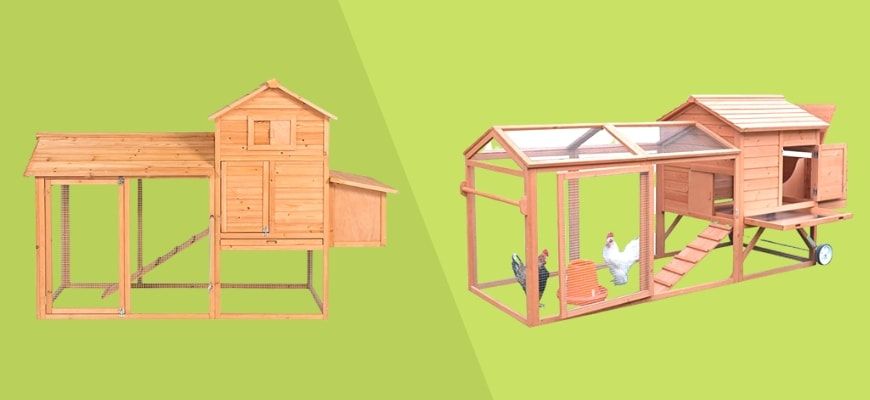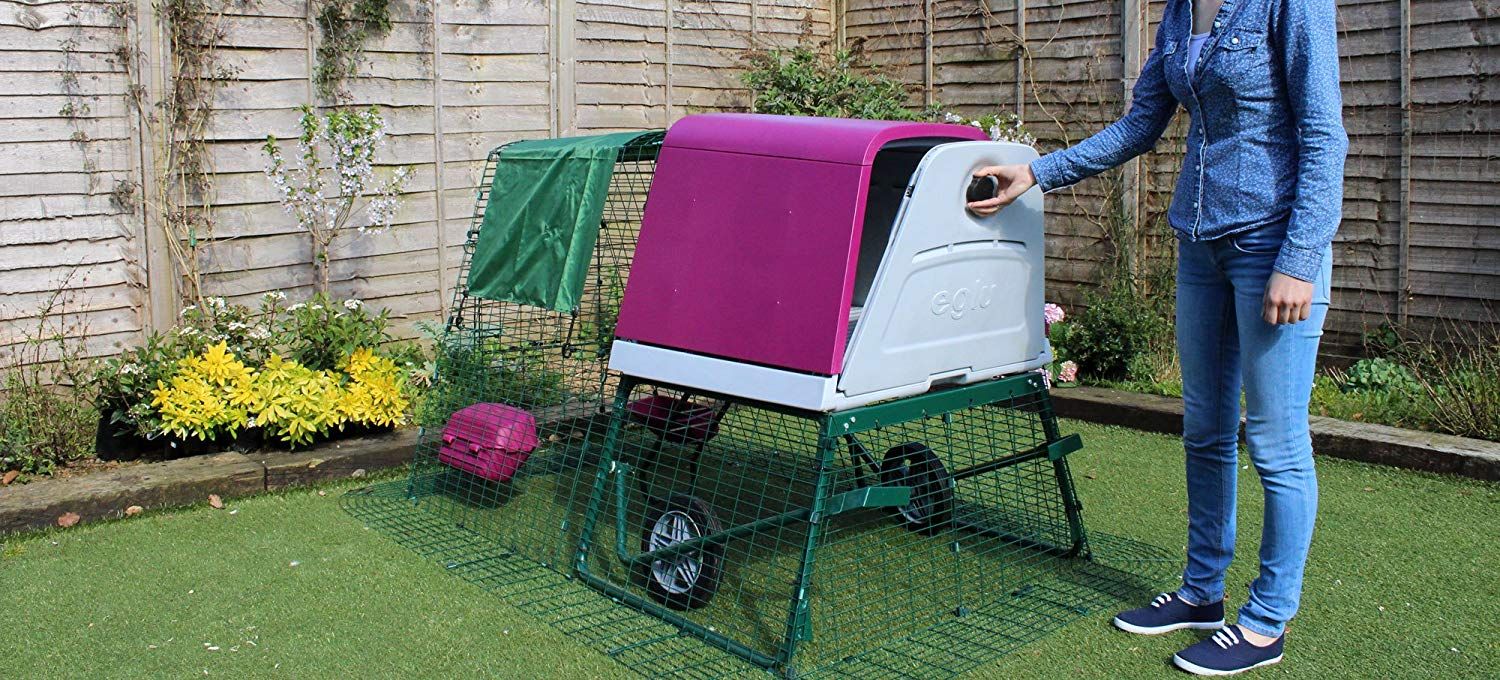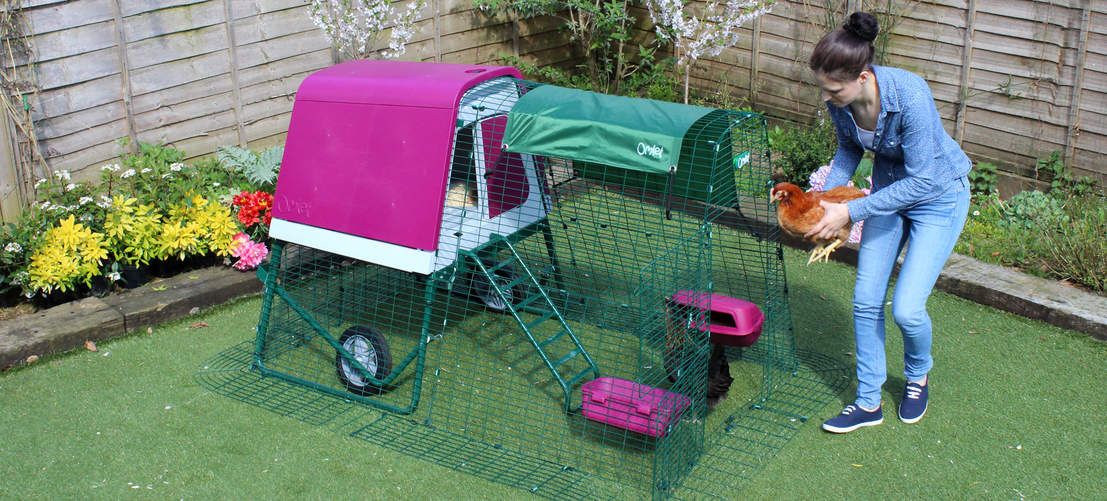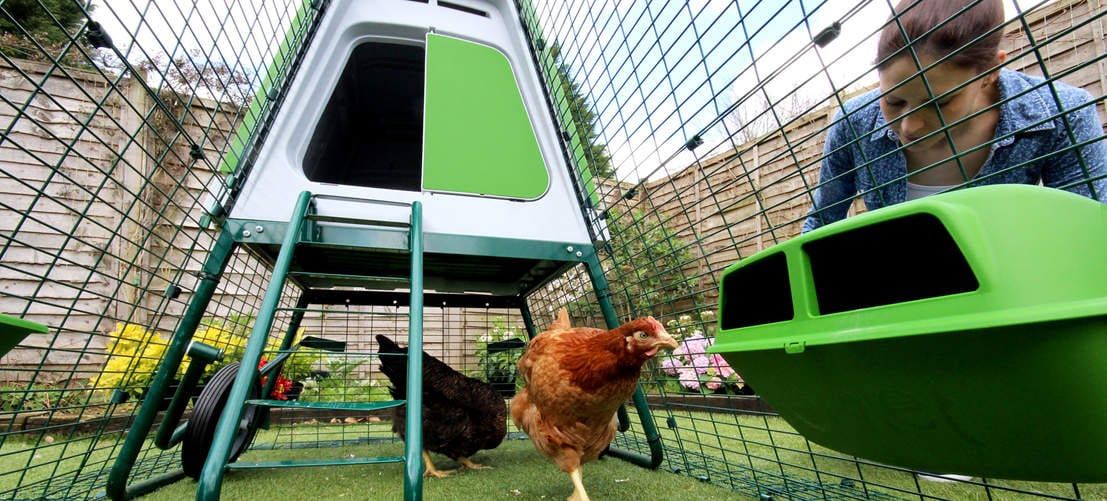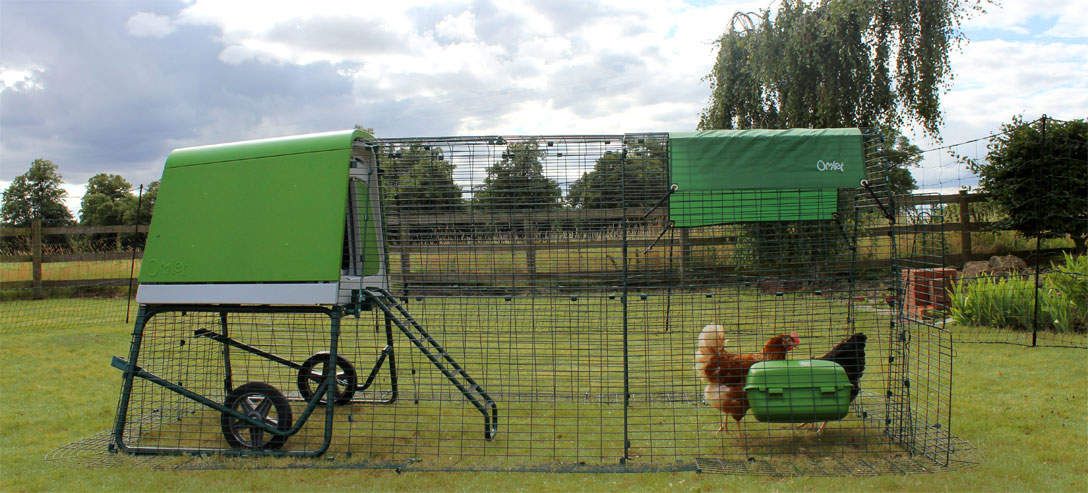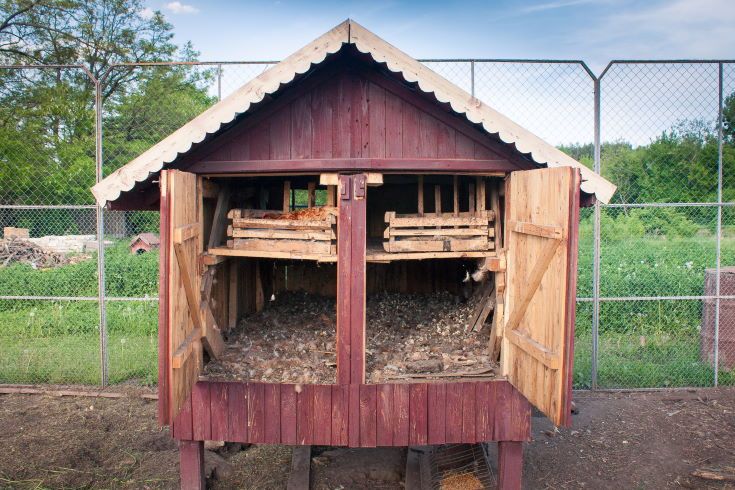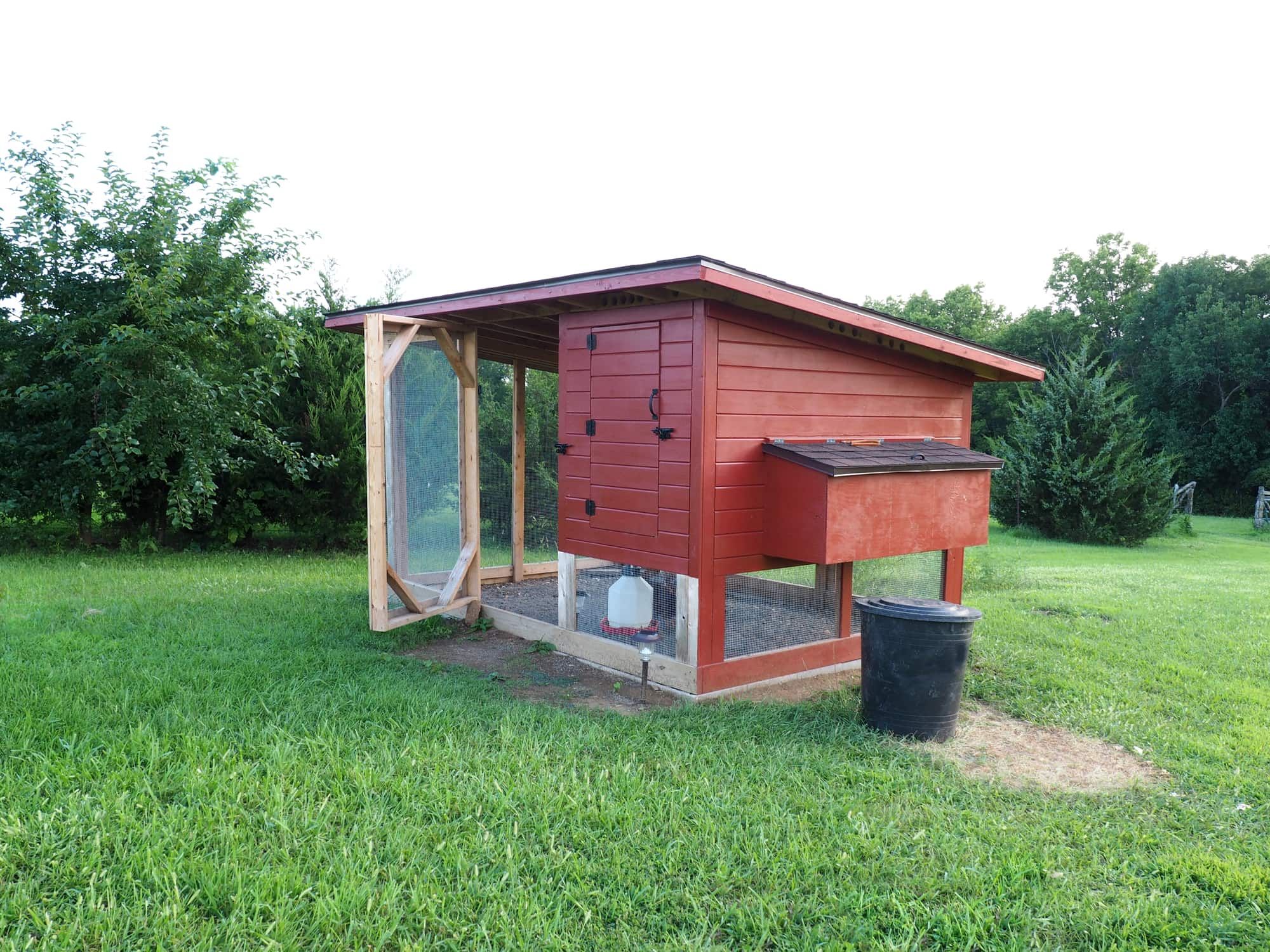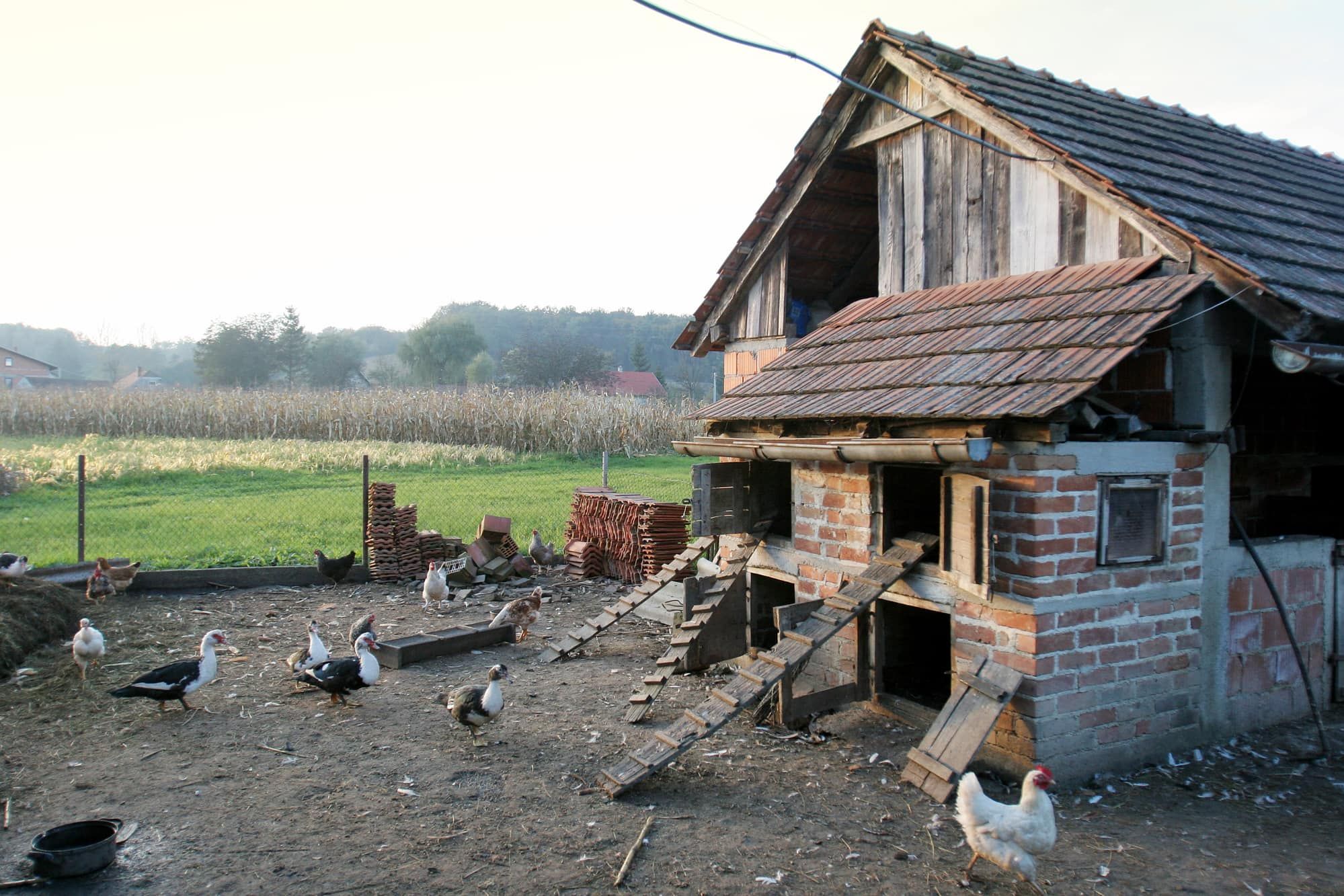If you are exploring the idea of keeping chickens, you need to do a little research about the type of housing you plan on providing for them. A chicken coop not only provides protection, it also is a place for them to roost at night and lay eggs. Even if you plan on free ranging you should explore your options to avoid having hens setting in trees and hiding nests all over your property.
Chicken coops come in all sorts of shapes and sizes, and can be made from many materials to customize your own space. What is important is to consider the room you are providing for the number of chickens you own, and allow for protection of both predators and weather in the area you live. This article explores what a chicken tractor vs coop differences actually are to help you decide which may be best for your situation.
Chicken Tractor vs Chicken Coop Comparisons
|
Chicken Tractor |
Chicken Coop |
|---|---|
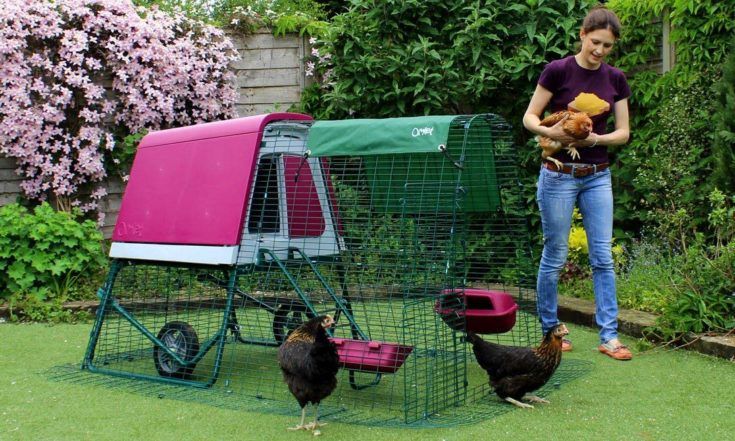
|
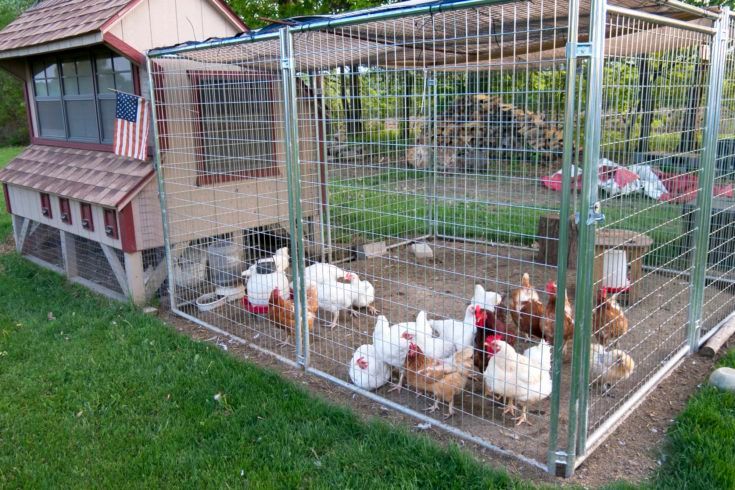
|
|
|
What is a Chicken Tractor?
|
Pros |
Cons |
|
|
Technically, a chicken tractor is a type of chicken coop. It almost always is a combination of compact housing designed for roosting and nesting connected to an enclosed run of some sort. The name tractor comes from the fact that it is generally lightweight, set on wheels or skids, and can be easily moved from one area to another.
The purpose behind this style is to allow chickens the exposure to fresh ground from one day to the next (as long as you move it). This allows them to live a somewhat ‘free range’ experience with provided predator protection.
Types
As mentioned, these are more compact designs to allow for easy portability with one or two people. There are various prefabricated designs made from durable plastics, as well as many DIY ideas and instructions available for use. They can be made from various materials, and allow the nesting and roosting area to either be raised off the ground, or sit level upon it. The important thing is to keep in mind the overall weight.
The attached run also needs to be compact and rigid enough to handle regular movement. They don't have to be fully enclosed, but many are to provide added support. Aluminum framing and chicken wire or netting are popular choices as covering, and can have the ability to allow free ranging with the opening of a door or lifting of enclosure material.
How Many Chickens Can It House?
Chicken tractor styles are not designed to house a large flock. Many are made to hold 3 to 5 hens, with larger styles able to handle 8 to 10 on average. The larger the flock, the larger the housing needs to be and the more often you will need to move the tractor, perhaps multiple times a day to avoid ruining the ground it is set upon.
Benefits of a Chicken Tractor
This design is great for keeping a small flock in a large area since you need plenty of space to rotate your tractor around. This also allows you to place it in areas you want cleaned up, such as an overgrown or expired garden you would like to replant.
Chickens not only clean up the area you place them of vegetation, they also take care of unwanted insects, such as ticks. The waste of chickens is nutrient rich as well, and when allowed to dry out and decompose into the soil adds vital organics back into the ground.
Keeping the chickens on the move like this also helps keep them healthy. There is no chance for them to pick up parasites or other diseases due to overexposure, and overall the fresh ground keeps them from too much exposure to their own waste as well.
Keeping everything enclosed helps provide protection, and allows them unlimited access to their coop for roosting and nesting. Plus, these are a fairly budget friendly option overall!
You may want to look at our compilation of tractor plans here.
Chicken Tractor Problems
There are some downsides to this design, however. For one, you more or less need to move the tractor every 24 hours or so, and since it needs to be lightweight enough to do so, you are limited overall in size.
If you do leave it in one place for more than a day or two, you also run the risk of tearing up the ground. Chickens will scratch and dig to make dusting beds and leave your ground uneven and torn up. This can also happen if you don’t have enough space to rotate around and find yourself overlapping areas every few days.
Because they are lightweight, they also are not as predator proof as other styles. Often the runs are easy to dig under and coops are easy to get into. If you know you will have aggressive predators coming after your chickens you may want to consider something more durable.
What is a Chicken Coop?
|
Pros |
Cons |
|
|
A chicken coop is any building, small or large, that houses chickens for roosting and laying. Coops can be of just about any design, made from existing structures, made from scratch, or purchased as a kit or whole. They allow you to customize them to your needs and can be portable as well as permanently in place.
They provide a comfortable place to lay their eggs, as well as a safe place to sleep since they are more or less night blind and are unable to escape from predators well. Coops can be just about anything you need them to be, and can even be fully enclosed at night for further protection.
They can be attached to runs if you wish for further protection, or be open to free range. Runs are easy to attach and allows the use of heavier materials, such as kennel fencing or more permanent framing from which to hang wire.
Types
As mentioned, coops can be of just about any type. Permanent, existing structures, such as barn stalls and storage sheds often make good coops. DIY instructions and kits are also popular, as are prefabricated designs.
There are many small options as well, including those that are portable, such as a chicken tractor set-up, or semi-portable for moving occasionally depending on season or need.
How Many Chickens Can It House?
In short, a coop can house and few, or as many chickens as you want! It is important to provide enough for each, approximately 2 square feet per chicken, and at least one nesting box for every 4 to 5 hens. Space includes vertical space as they roost!
Benefits of a Permanent Chicken Coop
A permanent, or semi-permanent, chicken coop is generally easy to access, easy to clean, don’t require a ton of maintenance overall, and can even be hooked up to electricity and water if you so desire.
They provide a sturdy and durable option for predator control, as well as can be altered season to season for weather protection through the use of insulating materials and the opening or closing of simple vent systems.
They also can be quite the addition to your yard and be decorated and painted to match your home, or fit in well with your landscape. Plus, you have the advantage of placing a permanent run in place, complete with predator control to avoid any mishaps.
Permanent Chicken Coop Problems
Probably the biggest issue with a permanent run is that the ground your chickens are housed upon, if you use a run, will become barren and compact fairly quickly. This also means that they are in one place for long periods of time, which means you need to clean more often to remove waste and avoid bacterias or parasites.
Also, if you decide to move, your coop isn’t going with you. So if you built or designed the perfect house for your chickens, you will have to start all over again. These can get quite pricey to build or furbish at times.
Conclusion
Hopefully, this clears up any issues you may have had pertaining to the difference between a chicken tractor and chicken coop. In short, a tractor IS a coop, just a style that is compact, portable, and designed for a few chickens and large spaces. If you have the space to move around a ‘tractor’ and only are looking to keep a few hens, then this may be a perfect option for you.
However, if you want a little more flexibility in reference to size, and none of the responsibility to move a coop day after day, a more permanent choice may be a better fit. Both are excellent options for your flock, and completely dependent on your own needs, space, and preferences.
If you have any questions or comments, please let us know below. And, as always, please share!

